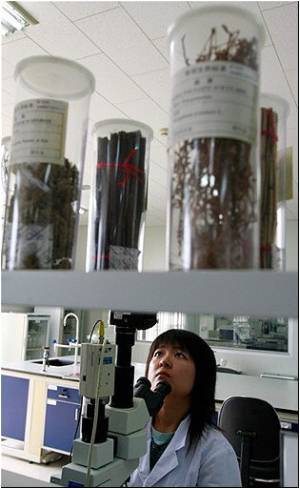
Now, a group of Vienna-based scientists, headed by Thomas Marlovits, has developed a high-resolution cryo-electron microscopy to clarify the structure of this infection apparatus on the near-atomic scale.
They said that the exact knowledge of the needles' building plan may help to develop compounds that interfere with its function, and thus combat not only salmonellae but also other pathogens that employ this system, such as pathogens that cause cholera, plague or typhoid.
'Austria's coolest microscope' makes it possible to shock-freeze biological samples at minus 196 degrees centigrade and view them in almost unchanged condition.
However, when 'zooming in' on their object, scientists are confronted with a treacherous problem - the high-energy electron beam falls at such high concentrations on the sample that the latter is destroyed after the very first image.
Scientists at the Vienna Institutes IMP (Research Institute of Molecular Pathology) and IMBA (Institute of Molecular Biotechnology) have resolved the problem by developing new image-processing algorithms and with sheer numbers of images. They analyzed about 37,000 images of isolated needle complexes.
Advertisement
The microscope works in semi-automated fashion at night to obtain the large number of images. This is very advantageous because human beings merely interfere with the job. They breathe, speak, move, and thus unsettle the sensitive microscope. Even a moving elevator may irritate the electron beam.
Advertisement
Marlovits regards this technology as an innovation boost.
"Using the methods we developed for our work, we were able to establish "imaging" standards at a very high level. We can explore its absolute limits with the aid of the fantastic infrastructure we have here at Campus Vienna Biocenter," he said.
The study will appear in the forthcoming issue of the journal Science.
Source-ANI












